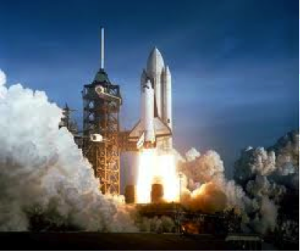High resolution lenses for machine vision — standard and custom lens design
Lens Technologies Trace their Roots to NASA’s Shuttle Technologies
High Resolution Lenses for machine vision, instrumentation, inspection and vibration-sensitive applications. Standard and custom hi-res lens assemblies.

Lens Technologies From NASA
The NASA space program has had a hand in many great technological advances that we see today in many different applications. NASA has some of the brightest minds in the world working to achieve excellence with our space program and also new ideas and inventions. Here are a couple of things in the industrial optical field that originated from the brains of NASA.
Video Image Stabilization and Registration (VISAR) technology developed by NASA to stabilize the shaky close-up images of shuttle launches was adapted to help the FBI analyze footage of the bombing at the 1996 Olympics in Atlanta. Since then it has been used extensively by police forces, the military and the intelligence community; it once helped to prove that Saddam Hussein had survived a US air strike, which had instead killed a body double.
Handheld Qwips (Quantum Well Infrared Photo Detectors ) developed by NASA’s Jet Propulsion Laboratory and Raytheon to analyze blast-off plumes from the shuttle, now have many uses, including night-vision and security applications and the detection of hotspots in forest fires.
NASA can also take some credit for modern Lasik eye surgery. The Ladar Tracker eye-tracking device used as part of the Ladar Vision 4000 system for Lasik eye surgery is based on a technology used for the shuttles’ automatic-docking system.
NASA has been a driving force for many new technological developments over the past few decades. Amazingly a lot of these technologies have earthly purposes as well. These are just a few of the many examples of how the U.S. space program has helped us in our technological advancements.